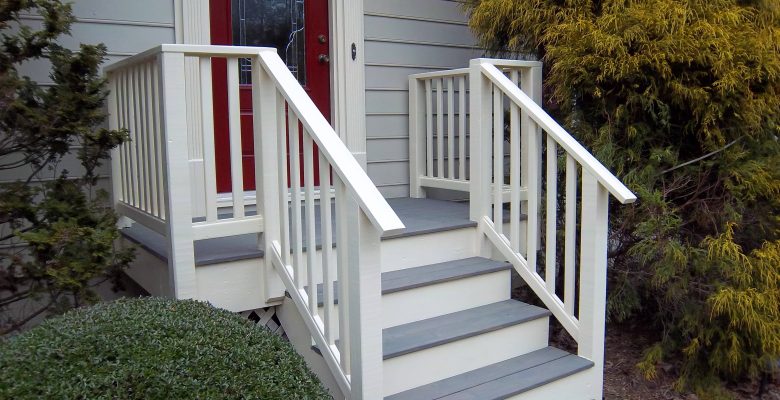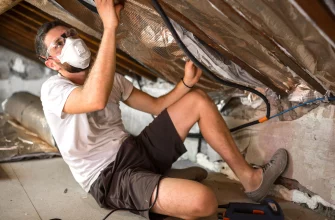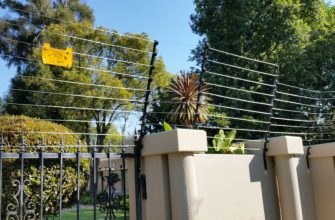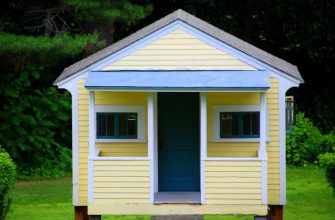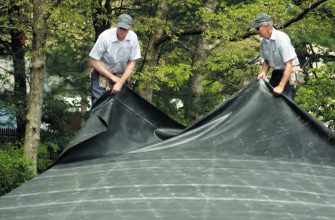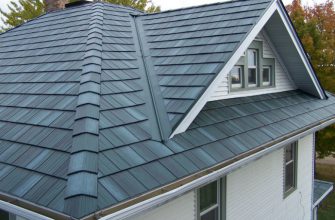Having a safe, attractive, and functional doorstep is essential for any home, including mobile homes. The doorstep serves as the main entryway into your home and makes a strong first impression on visitors. It also plays a critical role in accessibility, allowing residents to easily enter and exit the home.
However, many older mobile homes come with low-quality concrete slab or wooden doorsteps that are unstable, unattractive, or even dangerous. Upgrading to new, high-quality mobile home doorsteps can provide a range of benefits in terms of aesthetics, durability, and safety.
This comprehensive guide will provide mobile home owners with everything they need to know about choosing, installing, and caring for new doorsteps. We’ll cover the different types of mobile home doorsteps, factors to consider when selecting new steps, step-by-step installation instructions, maintenance and care recommendations, and ideas for enhancing your entryway space.
- Importance of Mobile Home Doorsteps
- Benefits of Upgrading Your Mobile Home Doorsteps
- Enhanced Safety
- Improved Accessibility
- Better Weather Resistance
- Increased Curb Appeal & Property Value
- Choosing the Right Doorstep for Your Mobile Home
- Types of Mobile Home Doorsteps
- Concrete Steps
- Wooden Steps
- Metal Steps
- Factors to Consider When Choosing a Mobile Home Doorstep
- Durability and Maintenance
- Style and Aesthetics
- Safety Features
- Installation Requirements
- Installing Your Mobile Home Doorstep
- Preparing the Site for Installation
- Step-by-Step Installation Process
- Tools and Materials Needed
- Ensuring Proper Alignment and Stability
- Finishing Touches and Safety Checks
- Maintaining and Caring for Your Mobile Home Doorstep
- Regular Cleaning and Inspection
- Repairing Damages and Wear
- Enhancing Safety and Accessibility
- Enhancing Your Mobile Home Doorstep Area
- Adding Lighting and Decor
- Creating a Welcoming Entryway Space
- Final Considerations for Your Mobile Home Doorsteps
Importance of Mobile Home Doorsteps
Having sturdy, well-designed doorsteps for your mobile home is very important for several reasons:
- Safety – Properly installed doorsteps prevent falls and injuries when entering or exiting the home.
- Accessibility – Steps at an optimal height allow for easy access for all residents, including seniors and those with disabilities.
- Weather protection – Quality materials protect the doorway from rain, snow, and other elements.
- Security – Doorsteps serve as a barrier and foundation for installing security features like lighting or cameras.
- Curb appeal – Attractive, well-maintained steps enhance the look of the home exterior.
- Added value – Upgraded doorsteps can increase a home’s worth and resale value down the road.
Considering these benefits, investing in high-quality and properly installed doorsteps is a smart upgrade that pays dividends for any mobile homeowner through added safety, convenience, and comfort over the long run.
Benefits of Upgrading Your Mobile Home Doorsteps
If your mobile home currently has old, worn out doorsteps, upgrading to new steps provides many worthwhile benefits:
Enhanced Safety
New doorsteps allow for safer entry and exit from the home. Properly constructed steps with railings prevent slips, trips, and falls that commonly occur with uneven, cracked concrete or rotting wooden steps.
Improved Accessibility
Upgraded steps can be built to an optimal height and with manageable riser heights between steps. This allows for easier access for seniors, children, or those with disabilities or mobility challenges.
Better Weather Resistance
High quality modern building materials, like treated lumber, composite materials, or metal, stand up better to exposure from rain, snow, and other elements compared to materials used on older doorsteps.
Increased Curb Appeal & Property Value
Replacing old, worn out steps with new, attractive doorsteps instantly improves the look of your home’s exterior. This can increase resale value and make your mobile home more appealing to potential buyers.
Considering these benefits, mobile homeowners with older, damaged steps should strongly consider upgrading to newer, safer doorsteps constructed with quality materials.
Choosing the Right Doorstep for Your Mobile Home
Types of Mobile Home Doorsteps
Concrete Steps
Concrete is a very common material used for mobile home doorsteps. Benefits of concrete steps include:
- High durability and long lifespan.
- Ability to mold concrete into various shapes and sizes.
- Low maintenance requirements.
- Affordable compared to other step materials.
Drawbacks can include susceptibility to cracking over time and no customization option after initial installation.
Wooden Steps
Wood, often pressure-treated pine lumber, is another typical doorstep building material. Benefits of wood steps include:
- Attractive natural appearance.
- Easier to customize size and shape compared to concrete.
- Softer surface than concrete, resulting in less slip risk.
- Can match existing wood decking or porches.
However, wood requires more maintenance by sealing, staining, or painting periodically. It also decays faster than other materials when exposed to moisture.
Metal Steps
Galvanized steel or aluminum steps offer great durability. Benefits of metal steps are:
- Very long lifespan with minimal maintenance.
- High slip resistance.
- Custom sizing and design options available.
- Withstands heavy foot traffic.
Drawbacks mainly come down to higher upfront cost and less attractive appearance that clashes with some home styles.
Factors to Consider When Choosing a Mobile Home Doorstep
Durability and Maintenance
Consider how well doorstep materials stand up to heavy usage, weather, and wear and tear over time. Also factor in regular maintenance needs – some materials like wood require more frequent sealing, staining, or painting while concrete and metal are more hands-off.
Style and Aesthetics
Choose steps that match the existing style and exterior finishes of your mobile home. For instance, metal steps usually don’t fit with manufactured homes that have wood or brick skirting around the base.
Safety Features
Look for steps with slip-resistant tread, proper step depth and height, and sturdy hand railings or banisters for enhanced safety, especially for seniors or children.
Installation Requirements
Factor in preparation work, construction complexity, need to hire a contractor vs DIY install, and costs. For example, concrete requires building solid foundations and proper slope/drainage planning.
Installing Your Mobile Home Doorstep
Preparing the Site for Installation
Proper planning and site prep before installing new doorsteps is crucial:
- Demolish and remove any existing old steps.
- Grade and level the ground area to proper height and slope.
- Lay down gravel base reinforced with landscape edging.
- Follow door manufacturer’s specs for appropriate entryway size.
- Obtain any necessary permits based on local building codes.
Ensuring the base and structure beneath new steps is sound helps prevent settling or failure down the road.
Step-by-Step Installation Process
Tools and Materials Needed
Gather all necessary tools and materials before starting doorstep installation, such as:
- Shovels, level, tape measure, screws, power tools for construction.
- Concrete mix, gravel, rebar, wood boards, composite materials.
- Carpentry tools like saw, drill, sander for wood steps.
- Personal protective equipment like gloves, eye protection, dust mask.
Having everything prepared ahead of time ensures the project goes smoothly and efficiently.
Ensuring Proper Alignment and Stability
As steps are assembled and put into place, check:
- Step heights and depths adhere to local code.
- Steps are level and even for each riser height.
- Side railings are installed properly for support.
- No uneven gaps exist between step frame and ground.
- Steps feel sturdy and do not rock or shift at all when weight is applied.
Taking care to construct stable, structurally sound steps prevents safety issues and need for repairs later on.
Finishing Touches and Safety Checks
Final installation steps include:
- Sanding, sealing or painting wood steps.
- Caulking gaps between step materials and mobile home.
- Adding railings, lighting or other accessories.
- Inspecting steps for tripping hazards.
- Checking stability and safety with weight on steps.
Carefully inspecting new steps and addressing any final concerns ensures safe access to the home for years to come.
Maintaining and Caring for Your Mobile Home Doorstep
Regular Cleaning and Inspection
It’s important to periodically clean doorsteps by:
- Sweeping away dirt, leaves, spiderwebs and other debris.
- Removing snow, ice in winter with salt/de-icer.
- Hosing down steps and scrubbing stains with cleaner.
- Checking steps for cracks, rot, loose nails, other defects.
This routine care helps maintain aesthetic appeal and safety by preventing slip hazards.
Repairing Damages and Wear
Catching and fixing minor step damage right away keeps problems from worsening over time. Common repairs include:
- Sealing small cracks in concrete with caulk.
- Re-staining faded wood steps.
- Replacing loose nails, screws, or fasteners.
- Re-securing unstable railings or banisters.
For more severe issues like crumbling concrete or rotten boards, full step replacement may become necessary.
Enhancing Safety and Accessibility
Optional upgrades to improve doorstep safety include:
- Adding tactile grip tape to step treads.
- Installing motion sensor lighting.
- Replacing narrow railings with wider, easier-to-grip handrails.
- Building a covering above steps to prevent ice buildup.
These enhancements create better experiences for all home residents and visitors.
Enhancing Your Mobile Home Doorstep Area
Adding Lighting and Decor
Lighting around doorsteps helps highlight hazards at night. Decorative touches also enhance appeal:
- Install step lights or post lamps on sides.
- Add flower pots, welcome mats or benches along steps.
- Paint or stencil designs onto riser edges for visual interestDisplay potted plants or sculptures on stair landings.
Little touches like these help create a warm, welcoming entry experience.
Creating a Welcoming Entryway Space
An inviting entry goes beyond just the steps themselves. Consider extending upgrades outward to improve first impressions, like:
- Building a front porch, pergola or portico roof above steps.
- Constructing handicap-accessible concrete pathways leading up to steps.
- Planting flower beds, hedges or trees surrounding door area.
- Installing a bench, patio set or water feature on a landing at bottom of steps.
- Adding a doormat, decorative planters or potted plants next to front door.
Thoughtful touches like these around the full entry space help guests feel welcome the moment they arrive at your mobile home.
Final Considerations for Your Mobile Home Doorsteps
Installing a new set of steps for your mobile home entryway is a complex process that requires careful planning and preparation. Be sure to:
- Research local building codes and obtain any required permits.
- Hire experienced contractors if tackling the project yourself seems unmanageable.
- Select durable step materials that complement your home’s existing design.
- Budget appropriately and understand all associated costs with demolition, installation, accessories.
- Plan ahead for ongoing maintenance and repairs down the road.
While upgrading your doorsteps requires an initial investment, new and well-constructed steps pay dividends for years through improved safety, easier access, and enhanced curb appeal.
We hope this guide gave you useful advice and ideas to help make the process of designing your ideal mobile home entryway much smoother. Your new doorsteps will serve as a stylish, functional centerpiece welcoming residents and guests for years to come.

